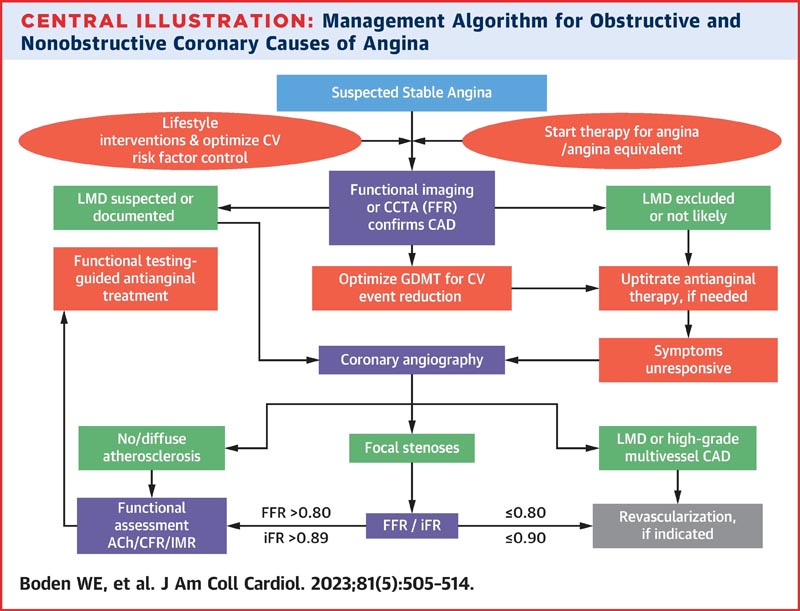Evolving management paradigm for patients with stable ischemic heart disease
Treatment of stable coronary artery disease (CAD) has been based on the assumption that flow-limiting atherosclerotic obstructions are the immediate cause of angina and myocardial ischemia in most patients and represent an important target for treatment. revascularization.
However, the role of revascularization in reducing long-term cardiac events in these patients has been limited primarily to those with left main coronary artery disease, 3-vessel disease with diabetes, or decreased ejection fraction.
Growing evidence indicates that non-epicardial coronary causes of angina and ischemia, including coronary microvascular dysfunction , vasospastic disorders, and disorders of myocardial metabolism, are more common than flow-limiting stenoses, raising concern that many Important causes other than epicardial CAD are not considered or investigated.

Highlights • Several mechanisms other than obstructive coronary artery disease can cause myocardial ischemia. • A conservative approach to management, including noninvasive testing, lifestyle interventions, and multifaceted goal-directed medical therapy, is evidence-based and often effective in patients with stable angina. • Pharmacologic and procedural approaches to stable ischemic heart disease are complementary , and their integration can optimize outcomes. |
















